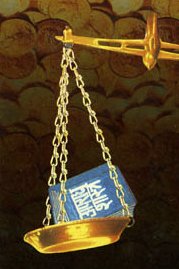Mahamandaleshvara, Mahāmaṇḍaleśvara, Maha-mandaleshvara: 5 definitions
Introduction:
Mahamandaleshvara means something in Hinduism, Sanskrit, the history of ancient India. If you want to know the exact meaning, history, etymology or English translation of this term then check out the descriptions on this page. Add your comment or reference to a book if you want to contribute to this summary article.
The Sanskrit term Mahāmaṇḍaleśvara can be transliterated into English as Mahamandalesvara or Mahamandaleshvara, using the IAST transliteration scheme (?).
In Hinduism
Arthashastra (politics and welfare)
Source: Shodhganga: Kakati Ganapatideva and his times (artha)Mahāmaṇḍaleśvara refers to the title of a ruler of a territyory.—The Āndhra māṇḍala political situation thus outlined gave rise to the māṇḍalika setup of administration. The epigraphs of the period refer to the māṇḍalika, sāmanta, mahāsāmanta and mahāmaṇḍaleśvara. The term māṇḍalika, in contradistination to the sāmanta, mahāsāmanta is higher in status. The mahāmaṇḍaleśvaras, in the epigraphs are mostly noticed outside the home province of the Kākatīyas. In Kandūru-nāḍu—the Kandūru Coḍa chiefs were designated as the mahāmaṇḍaleśvaras.

Arthashastra (अर्थशास्त्र, arthaśāstra) literature concerns itself with the teachings (shastra) of economic prosperity (artha) statecraft, politics and military tactics. The term arthashastra refers to both the name of these scientific teachings, as well as the name of a Sanskrit work included in such literature. This book was written (3rd century BCE) by by Kautilya, who flourished in the 4th century BCE.
India history and geography
Source: archive.org: Indian epigraphical glossaryMahāmaṇḍaleśvara (महामण्डलेश्वर).—According to the lexicons, a sovereign ruler who is the lord of 40 yojanas of and and a lakh of villages; but, in inscriptions, generally, the governor of a district or province; title of a feudatory ruler or governor; see Maṇḍaleśvara essentially meaning “the ruler of a maṇḍala or district”; also called Mahāmaṇḍalika, etc., cf. Mahāmaṇḍaleśvara-adhipati. The status of a Mahāmaṇḍaleśvara seems to have been superior to that of a Maṇḍaleśvara, while Mahāmaṇḍaleśvarādhipati apparently enjoyed a still higher rank.
Source: Cologne Digital Sanskrit Dictionaries: Indian Epigraphical GlossaryMahāmaṇḍaleśvara.—(IE 8-2; EI 30; CII 4; HD; BL; SITI; CITD), according to the lexicons, a sovereign ruler who is the lord of 40 yojanas of land and a lakh of villages; but, in insciriptions, generally, the governor of a district or pro- vince; title of a feudatory ruler or governor (see Bomb. Gaz., Vol. XXI, p. 354); see Maṇḍaleśvara essentially meaning ‘the ruler of a maṇḍala or district’; also called Mahāmaṇḍalika, etc., cf. Mahāmaṇḍaleśvara-adhipati. The status of a Mahāmaṇdal- eśvara seems to have been superior to that of a Maṇḍaleśvara, while Mahāmaṇḍaleśvarādhipati apparently enjoyed a still higher rank. Note: mahāmaṇḍaleśvara is defined in the “Indian epigraphical glossary” as it can be found on ancient inscriptions commonly written in Sanskrit, Prakrit or Dravidian languages.

The history of India traces the identification of countries, villages, towns and other regions of India, as well as mythology, zoology, royal dynasties, rulers, tribes, local festivities and traditions and regional languages. Ancient India enjoyed religious freedom and encourages the path of Dharma, a concept common to Buddhism, Hinduism, and Jainism.
Languages of India and abroad
Sanskrit dictionary
Source: Cologne Digital Sanskrit Dictionaries: Monier-Williams Sanskrit-English DictionaryMahāmaṇḍaleśvara (महामण्डलेश्वर):—[=mahā-maṇḍaleśvara] [from mahā-maṇḍala > mahā > mah] m. a gr° chief of a province, [cf. Lexicographers, esp. such as amarasiṃha, halāyudha, hemacandra, etc.]
[Sanskrit to German]
Sanskrit, also spelled संस्कृतम् (saṃskṛtam), is an ancient language of India commonly seen as the grandmother of the Indo-European language family (even English!). Closely allied with Prakrit and Pali, Sanskrit is more exhaustive in both grammar and terms and has the most extensive collection of literature in the world, greatly surpassing its sister-languages Greek and Latin.
See also (Relevant definitions)
Partial matches: Maha, Mandaleshvara.
Starts with: Mahamandaleshvara-adhipati.
Query error!
Full-text (+67): Mahamandaleshvara-adhipati, Mahamandalika, Jaggadeva, Betarasa, Nagarjunadeva, Mahamandal-adhipati, Mahimandaleshvara, Ballala, Bhagala, Barma, Virapuram, Mummunirajadeva, Bamagavunda, Ratrimatikanti, Kapsomapuram, Goparajupalle, Mavaiya, Gokak, Ajyapanayaka, Viyadika.
Relevant text
Search found 10 books and stories containing Mahamandaleshvara, Maha-mandaleshvara, Mahā-maṇḍaleśvara, Maha-mandalesvara, Mahāmaṇḍaleśvara, Mahamandalesvara; (plurals include: Mahamandaleshvaras, mandaleshvaras, maṇḍaleśvaras, mandalesvaras, Mahāmaṇḍaleśvaras, Mahamandalesvaras). You can also click to the full overview containing English textual excerpts. Below are direct links for the most relevant articles:
Middle Chola Temples (by S. R. Balasubrahmanyam)
Temples in Tadi-maalingi (Jananathapuram) < [Chapter II - Temples of Rajaraja I’s Time]
Temples in Vikkanampundi < [Vijayalaya]
Temples in Kuvam < [Chapter IV - Temples of Rajendra I’s Time]
Later Chola Temples (by S. R. Balasubrahmanyam)
Temples in Tirusattimuttam (Rajarajapuram) < [Chapter X - Temples of Rajadhjraja II’s Time]
Temples in Kannambadi < [Chapter II - Temples of Kulottunga I’s Time]
Temples in Nandalur (Nandaluru) < [Chapter II - Temples of Kulottunga I’s Time]
The history of Andhra country (1000 AD - 1500 AD) (by Yashoda Devi)
Part 50 - A New Family of the Telugu Cholas (Nellore) < [Chapter XX - The Telugu Cholas (Chodas)]
Part 27 - The Pallavas of Pentrala < [Chapter XII - The Pallavas]
Part 51 - The Telugu Cholas of Hemavati < [Chapter XX - The Telugu Cholas (Chodas)]
Kingship in early Medieval India (by Sudip Narayan Maitra)
Part 4 - Mahanadi Delta region: Sub Period III: 900-1300 A.D < [Chapter 3 - Kingship And Polity In Mahanadi Delta Region]
Early Chola Temples (by S. R. Balasubrahmanyam)
Temples in Tiruttani < [Chapter X - Historical Survey]
Matangalila and Hastyayurveda (study) (by Chandrima Das)